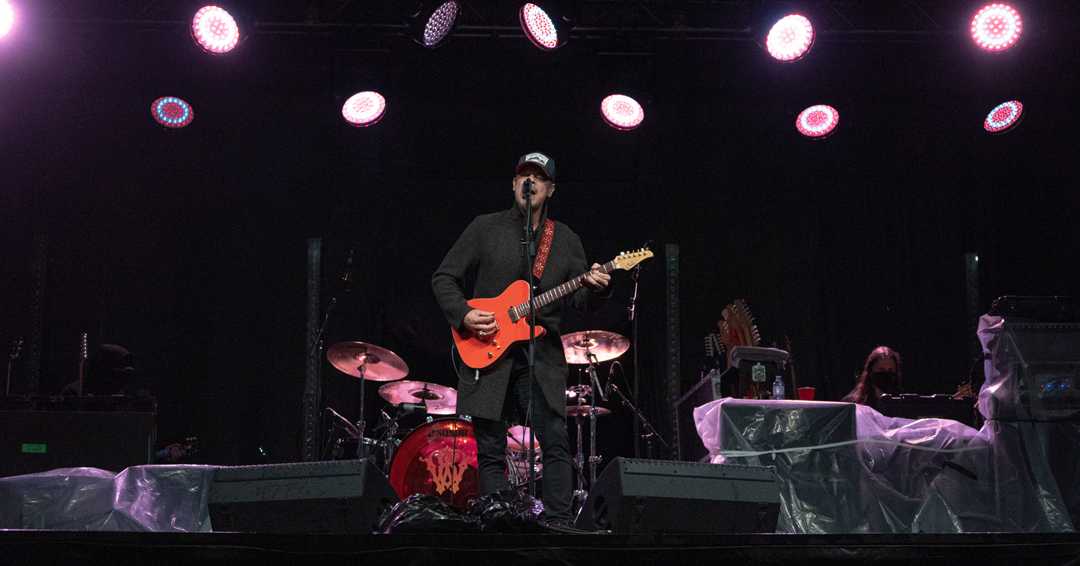Soundbox brings CS-Series to the drive-in
- Details

While drive-in concerts have become commonplace during the pandemic, increasingly they require traditional live sound reinforcement and the ability to transmit over FM, explains Colin Moore of Soundbox: “It’s all about the experience, so it’s becoming a mandatory part of the production specifications, and bands and audiences prefer it that way.” You can still socially distance and have great sound, he continues, adding: “Maybe one out of every 10 cars had their doors closed and the radio on, but most people were listening to the PA.”
Big Wreck FOH engineer, Dan Preston adds: “With some rigs, the guitars are producing frequencies through the cabinets that they’re not producing through the actual amp and, as far as the guitars, in particular, Ian Thornley has an expansive sound - a big, wide tone that needs to be reproduced accurately. I was able to do that here without having to fight the PA. I actually had to dial back my effects from a prior mix considerably. I use a lot of rolling and trap delays with Big Wreck and, with this PA, I didn’t have to fight for them to be heard or separate at all.”
Soon after Adamson officially launched the CS-Series, Soundbox purchased CS Upgrade kits for their entire Adamson S-Series inventory; 28 CS10, eight CS7, and six CS119 kits in all. “And based on their performance we’re really happy we did,” Moore adds. In all, for Y108 Presents Live at The Drive-In with Big Wreck, Soundbox deployed eight CS10s and six CS 119s per side and three racks (one Network Distribution System, one Power Distribution System, and a CS Gateway rack at FOH for tuning and control).
While the decision to upgrade wasn’t specifically motivated by the changes Covid has brought about in the live concert industry, the CS-Series on-board amplification and DSP, Milan-ready AVB connectivity, and compact footprint all speak to both current and pre-pandemic challenges. “Having efficient, light weight equipment we can package and transport quickly, for less expense, is more important than ever,” Moore explains. “We’re shaving a lot of weight off our truck packs by moving to this new infrastructure.
“As far as efficiency goes, this benefits Soundbox because we don’t need to send thousands of pounds of amp racks out and that also funnels down into an application-to-application scenario. For instance, say a band touring in a bus and trailer want a side-fill rig, they don’t need an amp rack. At the most basic level, they just plug-in power and an XLR and there’s your side-fill package. That’s impressive.”
From the standpoint of the on-site production team - regardless of the size or scope of the gig - the CS-Series provide substantial time-saving benefits when it comes to getting the rig wired and flown. “Anything smaller and lighter on stage is great. That’s also a plus with this rig,” Preston puts in.
Ultimately, however, the primary consideration with any sound system is how it sounds. “Right out of the gate (to my delight) when I was checking my L+R+Sub matrix sends individually, the hang itself produced so much of the lows. If it wasn’t configured already, I’d have dropped the subs down to 60 Hz or 50 Hz right away. For what I do this was a treat. I like to push my snare and guitars down pretty low with rock bands to make sure that they (and not just bass and drums) have some level of concussive force when required, and I was easily able to do that,” Preston adds.
While this was Preston’s first time mixing on a CS-Series PA, if he has his way, it won’t be the last. “Overall, I found the rig properly balanced and clean. My main bus EQ had minimal tweaks, and honestly, that was to taste, not to alter my start point; I’m looking forward to working on this rig again down the road.”
















